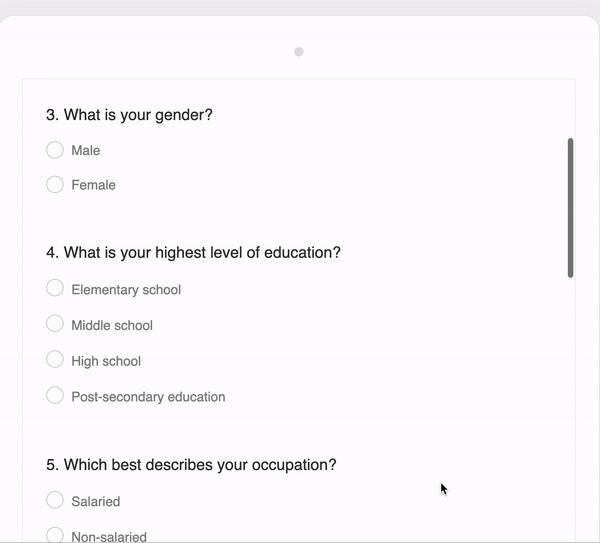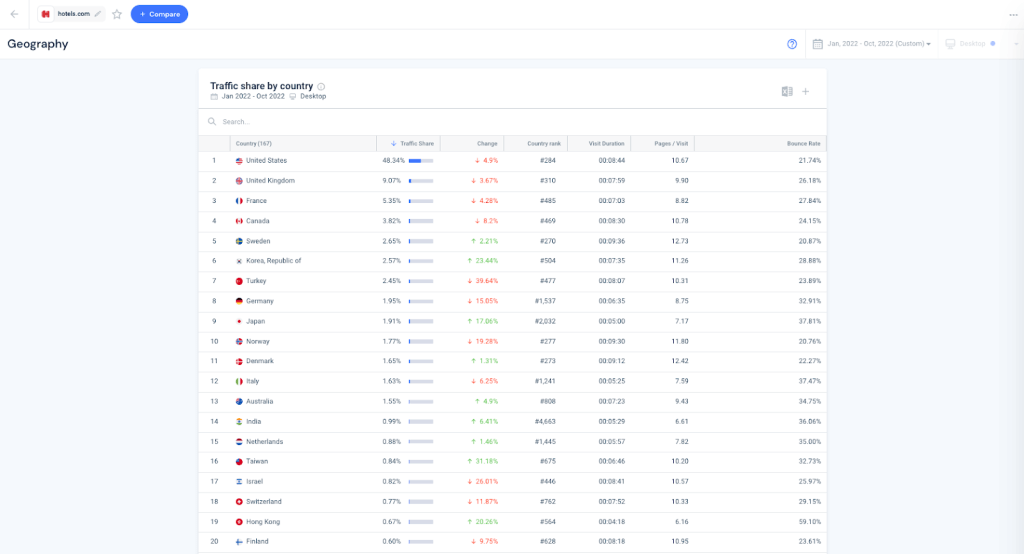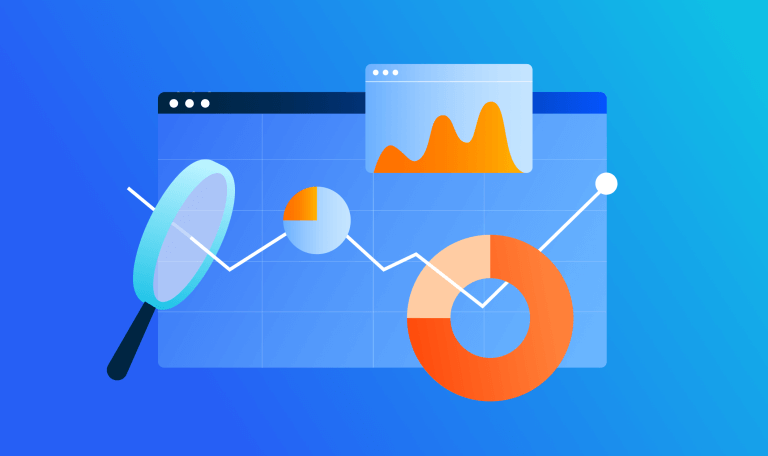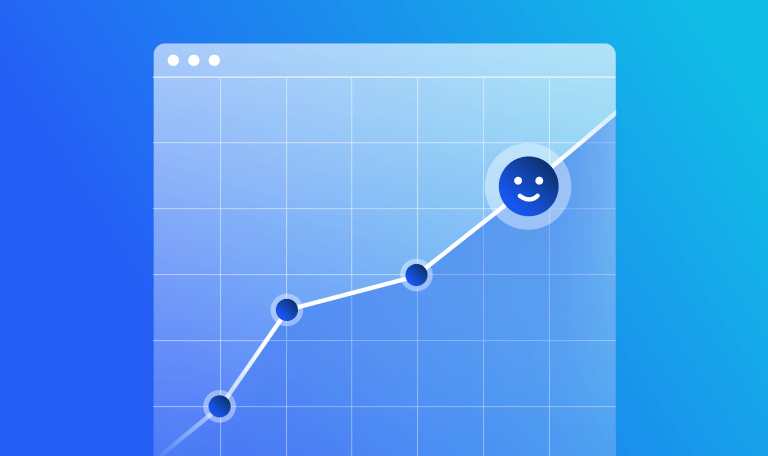What Is Market Segmentation? Tips, Types, and Benefits Explained

Market segmentation facilitates better personalization. It makes it easier for brands to connect with people in a meaningful way that impacts results and forges stronger bonds between consumers and companies alike.
Once you know how it’s done and what tools to use, you can immediately start to leverage it in your business.
What is market segmentation?
Market segmentation is a process of division. It takes people within a market and separates them into groups based on shared characteristics, interests, or behaviors. With it, companies can create stronger marketing campaigns to drive higher conversions and revenue.
The shared characteristics of the segments could be based on demographic data, such as location, age, occupation, and gender. It can also be based on needs, product usage, priorities, purchase history, company attributes, interests, funnel stage, and more.
Fun Fact: While market segmentation tools have advanced significantly, the concept of market segmentation is over 100 years old. Back in the 1920s, it was used by manufacturers who started to produce different vehicle models–each designed to meet the needs of various psychographic and demographic market segments, such as income, interests, lifestyle, and location.
Different types of market segmentation
There are four core types of market segmentation: demographic, firmographic, psychographic, and behavioral. The best segmentation type will depend on your business and its audience. Below, you’ll find a quick explainer for each.
1. Demographic segmentation
What it is: Demographic segmentation breaks a market or audience down into smaller groups based on characteristics that can be easily identified by various data points. This could include income, occupation, location, gender, marital status, age, education, nationality, religion, etc.
How it’s used: Organizations use demographic segmentation on the assumption that those with shared characteristics will have similar needs and respond to similar messages. By dividing up a market into smaller segments, companies can develop targeted marketing campaigns and use tactics like advertising personalization to target a group based on its demographic qualities.
Market segmentation example: Geographic segmentation is a popular type of demographic segmentation. Here, you divide a group up based on geographical location. Depending on the type of business and its reach, you may wish to target people in specific cities, states, or countries. Geographical location impacts language and timezone and has additional implications on purchasing habits, pricing, and cultural considerations.
In this example, I’m using Similarweb Digital Research Intelligence to review geographical segmentation for Sprout Social. I see the top 15 countries for my highest-traffic markets globally. I can view respective growth, average visit duration, how many pages per visit, and bounce rate. Of course, this is just the starting point for market segmentation. But in terms of showing me my most valued markets and their respective standings at a glance, it’s a quick and easy way to capture this data.
2. Behavioral segmentation
What it is: Behavioral segmentation splits people into groups based on their interactions. These can be online spending habits, product usage, check-out status, customer service, co-branded goods, discounted products, free trial take-up, benefits sought, lifestyle, patterns in decision-making, etc.
How it’s used: Organizations use behavioral segmentation to develop targeted marketing campaigns that focus on the specific habits that groups of users have displayed. By honing in on people’s preferences and actions, organizations can offer personalized ads, relevant offers, and tailored messaging that appeal to the target audience.
Market segmentation example: Benefit segmentation is a widely-used type of behavioral segmentation. Here, a target audience can be split into categories of perceived benefits. Let’s take a skincare brand as an example. Some of the different benefits could be:
- Anti-aging
- Dry skin
- Oily skin
- Acne-prone skin
- Blemishes or pigmentation
- Sensitive skin
Here, we group consumers into categories by ‘benefit’ based on their individual skin type. This type of market segmentation gives a business the ability to target specific groups with related products, content, offers, and more.
Read More: Your Guide to Behavioral Segmentation With Examples and Practical Tips
3. Firmographic segmentation
What it is: Firmographic segmentation is a type of market segmentation that examines organizations. It includes data points, such as company size, number of employees, locations, size of customer base, industry, revenue, etc.
How it’s used: This type of market segmentation is widely used for B2B marketing purposes as it analyzes organizations instead of individuals. It takes groups of businesses and sorts them based on shared or similar attributes, which helps create more effective targeted campaigns.
Market segmentation example: In the B2B technology space, a company providing IT support would do firmographic segmentation to separate enterprise accounts from the SMB market. This way, it can approach larger organizations with a tailored package for complex support and smaller businesses with a more cost-effective, fixed-fee service for a more basic level of support.
4. Psychographic segmentation
What it is: Psychographic segmentation is perceived to be one of the most challenging types of market segmentation. It splits a market up according to personality traits, consumer interests, values, lifestyle, opinions, etc.
How it’s used: This type of market segmentation is used by marketers who need to select specific groups based on their interests, likes, and opinions. Social media has enabled organizations to leverage psychographic segmentation more effectively, as people signal their interests openly on these platforms.
Market segmentation example: A great example of psychographic segmentation in action comes in the form of a simple market research survey. If you’ve ever received a survey from a brand you shop with that asks about your hobbies or interests – this is how most types of psychographic segmentation start out.
Here’s an example of a market segmentation survey in action. Most people are accustomed to seeing these types of forms and will be asked to complete them by companies they already do business with or through platforms like Yougov.
Benefits of market segmentation
At its very core, segmenting a market will help you generate more demand for your business. It can shape your strategy and play out in more personalized messaging that increases the appeal of a product or service to a target audience. This naturally leads to better engagement rate and higher conversions while adding to the bottom line – something any business will benefit from.
Let’s take a look at some of the top benefits market segmentation offers.
Discover new opportunities for growth
Market segmentation research helps organizations decipher new ways to grow. Use it to find and convert new customers, uncover new marketing channels to use, find and flesh out new markets to enter, and entice customers to buy from you again.
Lower cost of acquisition
Market segmentation can also reduce customer acquisition costs. With it, you can slice and dice a market into bitesize chunks, then pick and choose priorities according to your budget or preference. Knowing where and how to reach customers reduces the time and money needed to acquire them.
Let’s say you’re a multinational firm spending money consistently on PPC and TV advertising. Your strategy takes a mass market approach, and results are steadily increasing. After doing market segmentation, you find that your ideal customer profile spends more time on social channels, specifically LinkedIn and Twitter, and their newspaper of choice is the New York Times. You would then be able to use this data to reach more people in your target market far more effectively and at a much lower cost to your business.
Create tailored offerings
Personalized offers are no longer nice to have; modern-day consumers expect and respond to targeted ads based on their purchase history, needs, habits, and other important factors. Market segmentation gives you data to fuel these activities and create bespoke offers that hit the mark with your prospects.
Foster loyalty
You can build stronger relationships with clients by communicating in a way that resonates and has an impact. With closer connections to customers, they feel understood, valued, and important to your business, making them less likely to leave or take up rival offers on a whim.
A survey by Salesforce.com revealed 70% of consumers believe a company’s ability to understand their individual needs impacts their loyalty.
Helpful for new product development
You can and should design products and features around your customers’ needs. Market segmentation studies give you an x-ray vision into the pain points, wants, and needs of a target market. Needs-based segmentation is ripe for finding whitespaces in a market and serves as a great platform for innovation when launching new products.
Achieve better post-launch product evaluations
Market segmentation can also come into play once a product or service is launched. Organizations can use it to understand potential shortfalls of a product vs. consumer needs and expectations.
Improve customer experience
Market segmentation outcomes shouldn’t be limited to marketing and management. When you take time to collect data and share it throughout an organization, you can leverage it to deliver a better experience.
In a study conducted by Evergage, over 88% of marketers said their biggest goal with personalization is to improve customer experience.
Here’s a quick example.
A telecom provider or streaming service could segment its existing customers based on their product usage data. Should a customer call in to speak with your team, they know exactly what products or add-ons to offer based on this information. It leads to a better experience, and customers feel valued and understood. These stats would also be pivotal for service teams looking after clients who wish to cancel, as they can immediately step in with an enticing offer that’s relevant and of genuine value.
Attract the right customers
Market segmentation enables you to deliver more personalized, powerful marketing campaigns. With this, you can target prospects who are an ideal match for your products or services. Combine this with well-defined target personas for each segment of your market, and you’ll reap the rewards.
Supercharge your marketing strategy
Segmentation adds substance to your marketing strategy, giving you vital intel about who to target, where to find them, and how to speak with them effectively. Having access to digital intelligence platforms with granular data is essential for any successful digital marketing strategy.
Fine-tune your messaging
Most brands have well-developed audience personas, each with their own preferences and pain points to address – doing market segmentation gives you ultra-granular data. Allowing you to create impactful messaging for specific groups based on their unique and multivariate characteristics.
Let’s say you’re an e-tailer focused on selling laptops and computing equipment to a broad market. The messaging you use to students or younger members of your audience who are looking for bargain basement offers won’t necessarily appeal to the portion of your target market who want high-spec equipment. So, it’s important to use market segmentation to determine what messages are best for each persona you target.
Increase response rates and conversions
Tailored messaging that reaches people at the right time and says the right things can help you boost response rate and, thus, conversions. Whether through retargeting, social, or email outreach, you will get higher conversions and better responses to your marketing efforts.
Develop customer personas
The more market segmentation you can do, the more accurate your audience personas will be. Using a blend of segmentation types, and often will help you develop ideal customer profiles that are true to life and relevant to today’s market.
Support decision-making in other business areas
By analyzing the preferences of different segments, you can accommodate the audience better in other areas, such as pricing, distribution, content, and design.
Considerations before starting market segmentation
There are four core phases to address before you start any market segmentation activities. It’s important not to skip over these – doing so will ensure you’ve considered and developed a thorough plan that will save you time and enrich your results.
- Planning
Identify clear goals for your market segmentation. Consider its purpose and what you want to find out from the activity. Are there any existing segments used by your business or prior research to review?
- Research
Do a competitive analysis to establish any existing segments that your rivals target. You can use an audience analysis tool to do basic demographic segmentation for your current customer base or analyze your competitors. This includes considering what type of data you want to collect and the best ways to obtain it.
Tools like Similarweb Research Intelligence can help, but there are other sources you might consider, such as buying data from a third-party data source, using data capture forms, quizzes on your site, or even social media audience analytics tools.
- Analysis
Here, you will evaluate your list of potential segments. Do your segments align with your ideal customer profile? You’ll need to consider the short and long-term consequences of focusing on these segments, both collectively and individually.
For instance, if you decide to go all-in on messaging for a younger audience, consider the impact this could have on your audience who fall outside of this target demographic. Another key consideration is the data. How and where you source information for your segments will impact how representative it is of the true market segments.
- Strategy
Once you’ve analyzed your potential audience and segments can you then develop a strategy for your own market segmentation. Here, you want to establish what defines a successful segment strategy, considering metrics, and KPIs, then defining what success will look like. Think about how and if you can test assumptions made about segments on a smaller scale before implementing broader marketing activities.
Once all of these phases have been considered, you will need to consider how to communicate the new strategy to the business. It’s important that all divisions that may come into contact with customers, such as sales, support, and customer service teams know about the marketing campaigns and understand why and how the target audience is being segmented.
How to optimize your market segmentation strategy
Keep these three tips in mind when creating your market segmentation strategy:
- Make sure your segmentation variables are measurable. To create an effective strategy, you must measure and analyze segment performance and compare the results.
- Choose criteria that are related to the buyer’s journey and could affect the purchasing decision. Let’s say you are offering swimwear. Segmenting by gender would result in more effective marketing. But if you offer a streaming service, gender may not be relevant. Instead, you’d need to consider behavioral-based segments, such as device distribution or session duration.
- Monitor and optimize segment performance. Adapt content in segments or test different marketing channels. Individual prospects may move from one segment to another based on changing behaviors or preferences as they move through the funnel.
Market segmentation with Similarweb
Similarweb Digital Research Intelligence gives you instant access to data that will help you do demographic, behavioral, and psychographic segmentation across a market or for specific competitors you wish to track.
To bring this example to life, I am choosing the travel sector. Specifically, the accommodation and hotels market. This is from the perspective of an industry leader, hotels.com.
Demographic segmentation example
Step 1: First, I am looking at demographic segmentation to establish key facts about my current audience. I want to understand which countries I perform highest in to inform my geographic segmentation.
Here, I see my top 20 locations and the respective growth and decline in each. My top 5 markets account for almost 70% of my total traffic. This allows me to geographically segment my business and split each country into its own segment to analyze. For the purpose of this example, I will focus only on my top market, which is the US.
Step 2: Next, I want to see how my own traffic share in each geographic segment compares with the key players in my industry. By comparing traffic share by country with my four closest rivals, I get a picture of who performs best in each market. This intel helps me select which competitors to target for the next phase of my market segmentation.
In the US, booking.com and expedia.com achieve significantly better results, with booking.com commanding a 31% share and expedia.com achieving almost 50% market share.
Step 3: Now, I will use further demographic segmentation to see how our audiences compare. I start my market segmentation by analyzing the audience demographics of hotels.com, booking.com, and expedia.com, side-by-side for my chosen market.
Here, Expedia is doing a better job at attracting a younger demographic and is performing better with a male audience. However, on the surface, things look fairly well balanced. This requires me to go deeper into a website segment analysis to see exactly where Expedia is getting its gains.
This very straightforward exercise gives me key facts about the demographics of my audience vs others in my space. If you repeat this activity across all major markets and consider industry leaders and emerging players alike, you can use this information to build relevant segments to target with market campaigns that are location, age or gender specific.
Helpful reading: Read our guide to get a 7-step guide to doing market segmentation
Similarweb customer success story using market segmentation
Wonderbly is a global firm offering personalized books online to over 6 million customers. It used a blend of demographic and psychographic segmentation to uncover a new audience profile and product line to add to its range. After implementation, it saw a 69% growth in revenue due to the changes it made.
It had three key challenges to solve.
- Low visibility into key competitor’s activity
- Limited view of audience browsing behavior
- Lack of data to enter new markets
Here’s how it went to battle and came out a winner.
- By doing demographic segmentation, it analyzed its own audience vs those of its rivals.
Using Similarweb audience demographics, it uncovered rivals were better at attracting a younger demographic. With this knowledge, it developed a new audience profile that honed in on a younger persona and later adapted campaign strategy and creatives to suit.
2. Next, it used market segmentation to analyze the respective seasonal performance of each competitor by category.
By splitting up each period, and reviewing data provided by Similarweb’s Seasonal Trends Keywords, it was able to see rivals’ traffic gains for the Weddings and Anniversaries category. This intel enabled it to identify an untapped market and see its potential in tandem.
3. Finally, using a type of behavioral segmentation, it reviewed the interests and online shopping habits of an audience it was yet to capture. Similarweb’s audience data helped identify several key partners in the US, UK, and CA, to collaborate on content-focused partnerships.
Here, you see Similarweb’s audience overlap. This uncovered insights about the existing and untapped audience. It included which sites they cross-browsed and how loyal their customers are compared to their rivals.
Wrapping up – what is market segmentation
Similarweb’s suite of market intelligence features helps you perform many types of market segmentation; without the need to invest in third or second-party data or wait around for extensive studies and analysis to take place. With continuous access to fresh data, you can enjoy dynamic segmentation capabilities that allow you to flex and rapidly adapt personas, strategies, and campaigns.
Try Similarweb for free and find out for yourself how our research tools can support your market segmentation.
Similarweb Digital Research Intelligence gives you a ready-made platform to access insights and data that can revolutionize how your business makes decisions. It’s trusted and used by some of the world’s biggest brands: click through below to get a 7-day trial, for free.
Why Similarweb?
Similarweb’s suite of digital intelligence solutions offers unbiased, accurate, honest insights you can trust for analyzing any industry, market, or company.
- Methodologies used for data collection are robust, transparent, and trustworthy.
- It updates dynamically–giving you the freshest data about an industry or market.
- Filter and refine results according to your needs.
- Clear presentation of data via an easy-to-use, intuitive platform.
- Data is available via an API – so you can plug into platforms like Tableau or PowerBI to streamline your analyses.
FAQs
How do you collect data for market segmentation?
You can use market intelligence tools like Similarweb. Alternatively, you can survey existing customers via email, lead generation forms, quizzes, and even try out social media audience insights if you’re active on those channels. You can also purchase data from third-party or second-party sources.
What is market segmentation?
Market segmentation is the practice of dividing your target market into approachable groups.
What are the 4 types of market segmentation?
Demographic, psychographic, behavioral, and geographic segmentation are considered the four main types of market segmentation.
What are the benefits of Market Segmentation?
The benefits of market segmentation include increased efficiency in marketing activities, more effective targeting of customer segments, and the ability to customize product offerings to meet customer needs.
Track your digital metrics and grow market share
Contact us to set up a call with a market research specialist




















